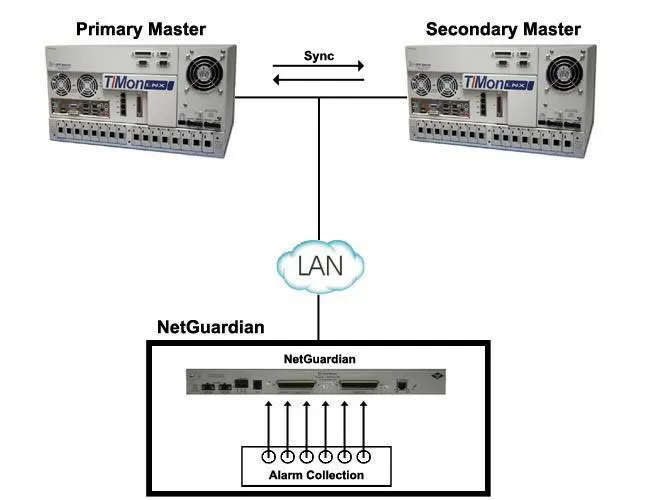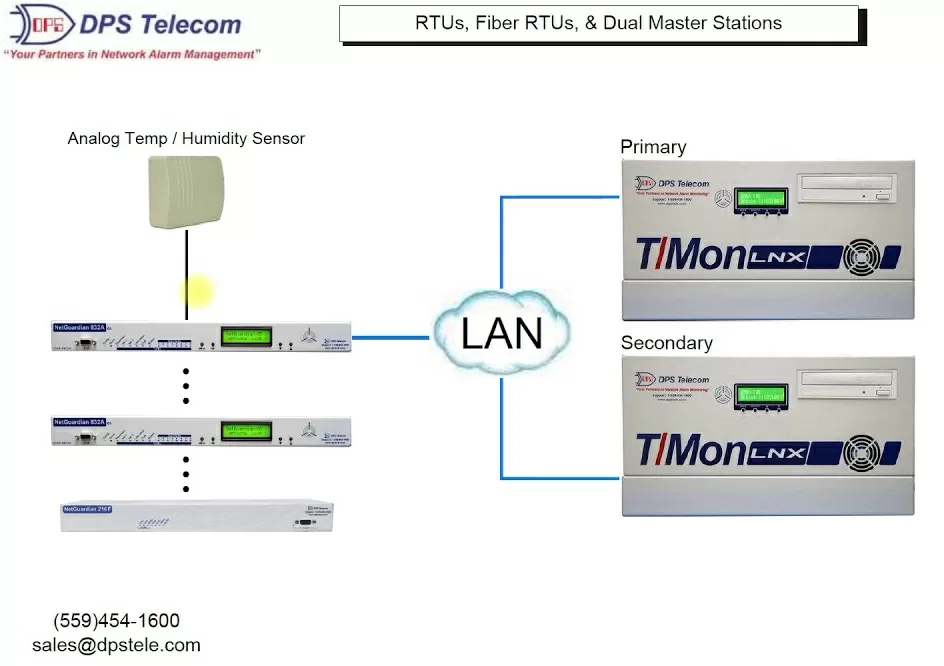Check out our White Paper Series!
A complete library of helpful advice and survival guides for every aspect of system monitoring and control.
1-800-693-0351
Have a specific question? Ask our team of expert engineers and get a specific answer!
Sign up for the next DPS Factory Training!

Whether you're new to our equipment or you've used it for years, DPS factory training is the best way to get more from your monitoring.
Reserve Your Seat TodayMaybe a security breach happened. Maybe there was a lightning storm and your monitoring devices got damaged. There are many reasons why a remote monitoring system can fail.
When your monitoring system fails, you won't have visibility over your network to prevent outages. And, every second that your network is down, you're putting your services and revenue in jeopardy.
But, what can you do when your monitoring solution becomes impaired? After all, leaving the security of your network to chance is simply not a possibility.
In this article, we'll explore a solution to put into practice to avoid flying blind if your monitoring system fails.
Your network monitoring system provides you with up-to-the-minute and comprehensive information about the status of your network at all times, while also giving you archiving and control functions.
It's easy to take for granted the reliability of your network monitoring system, but just like any other piece of equipment, your monitoring system can fail. Outages due to hardware impairment can be a result of many different circumstances that you can't control, such as vandalism, natural disasters, electrical damage. Losing your monitoring system means that you'll be blind when it comes to your network status.
Now, think for a moment what would happen if for some reason your visibility was lost. There would be no way to know about potential network problems until it's too late.
So, in a nutshell:
Having redundant master stations is the solution to avoid losing visibility when your monitoring system fails.

The redundant master is a backup master station that would completely take over whenever your primary one fails. This LAN-based backup should still be able to provide you with the alarms and notifications you need - even if it's not located at the same site as the primary master.
Too many organizations rely on only one single master station, and when it fails there's no way for them to protect their network against downtime. There are usually three different times when network managers choose to deploy redundant master stations. They are:
If your redundancy plan is based on dual SNMP managers, it's important to make sure that your remote monitoring devices are able to send traps to multiple SNMP managers.
To protect your network against a potential loss of visibility, our T/Mon master station can support redundancy capabilities. This redundancy is an additional layer of protection to your network.
To secure your system against hardware failures, you can deploy a second T/Mon in the same rack as the primary. If an emergency happens for any reason and the primary master fails for any reason, then the secondary will automatically take over monitoring your network.
A dual T/Mon redundant setup involves the T/Mon NRI Automatic Synchronization Module. By using the T/Mon NRI module, you'll be able to sync a primary and secondary T/Mon master station. This way, if something takes your primary T/Mon down, your second T/Mon will be synced up and on the same page.
With NRI, the secondary T/Mon will be able to take over monitoring within seconds of a primary T/Mon failure. And you won't have to acknowledge recent alarms again after your backup takes over monitoring, this transition will be seamless.
Here are the key advantages of NRI on the T/Mon:
What would happen to your network if a hurricane, flood, or extended power failure took down your monitoring system? Without a standby T/Mon at a remote location, you won't be able to know what's going on at the time you need it most.
But, since natural disasters and other catastrophic events can have devastating effects in some areas, many of our clients have deployed two T/Mon master stations and placed them thousands of miles apart - even on opposite sides of a national network. This way a natural disaster or other events won't take out both of their master stations.

Truly efficient redundancy protects your monitoring system against site-specific failures, which is why the T/Mon offers geo diverse backup capabilities.
Redundant backup monitoring with the T/Mon allows you to form a disaster-recovery plan. When two T/Mon units are deployed in your network, one can be assigned to be a secondary backup.
The NRI module will be responsible for keeping both masters in sync, so the backup is always up-to-date. So, if your primary T/Mon on-site goes down, the backup unit will be able to assume the monitoring of your network in an instant.
The backup T/Mon handles monitoring until the primary comes back online, that's when it sends an update to the primary master. This all means that no time, network visibility, or databasing capabilities have to be sacrificed.
Additionally to providing fault tolerance and disaster-recovery, deploying a secondary T/Mon can bring you additional benefits. Some of them are:
Now you know the solution for the monitoring system reliability problem and its advantages. But, is it really worth the investment?
To answer this question, it's important to take into consideration some key points that will help you determine how urgent it is for you to invest in a redundant master station (if you didn't already do it from the beginning). Here's what you need to keep in mind:
You can argue that you already have a disaster recovery plan ready for times when you do have a problem - you can simply send technicians to access the devices directly. But, how immediate the solution will be if the failure happens at two in the morning in a very remote site?
In a nutshell, simply having a secondary master station is the most efficient disaster-recovery plan you can have to efficiently face any crisis.
Natural disasters don't happen every day, of course. But, when they do happen, being proactive can represent the difference between service continuity and a major downtime.
Even if you have been getting by with only one master station, the risks of losing your network visibility are always present.
In fact, if you have a growing network spreading out over time, having a backup plan is essential to maintain visibility. If something were to happen to your primary master station (due to natural disasters or another source of damage), your network will be exposed and at risk until you can get your monitoring system back online.
Your network reliability will be greatly improved if you avoid gambling with your uptime and deploy redundant master stations.
Additionally, if your central master station is the T/Mon, then it's a very straight-forward process to add redundancy. With the NRI module installed, the secondary T/Mon would take over with an up-to-the-minute picture of alarm events. Whether your secondary is in the same rack or on the other side of the world, an IP address is all you need to keep it standing by, ready to take over when disasters happen.
Reach out to us today and learn more about the benefits of having redundant alarm masters.

Morgana Siggins
Morgana Siggins is a marketing writer, content creator, and documentation specialist at DPS Telecom. She has created over 200 blog articles and videos sharing her years of experience in the remote monitoring industry.